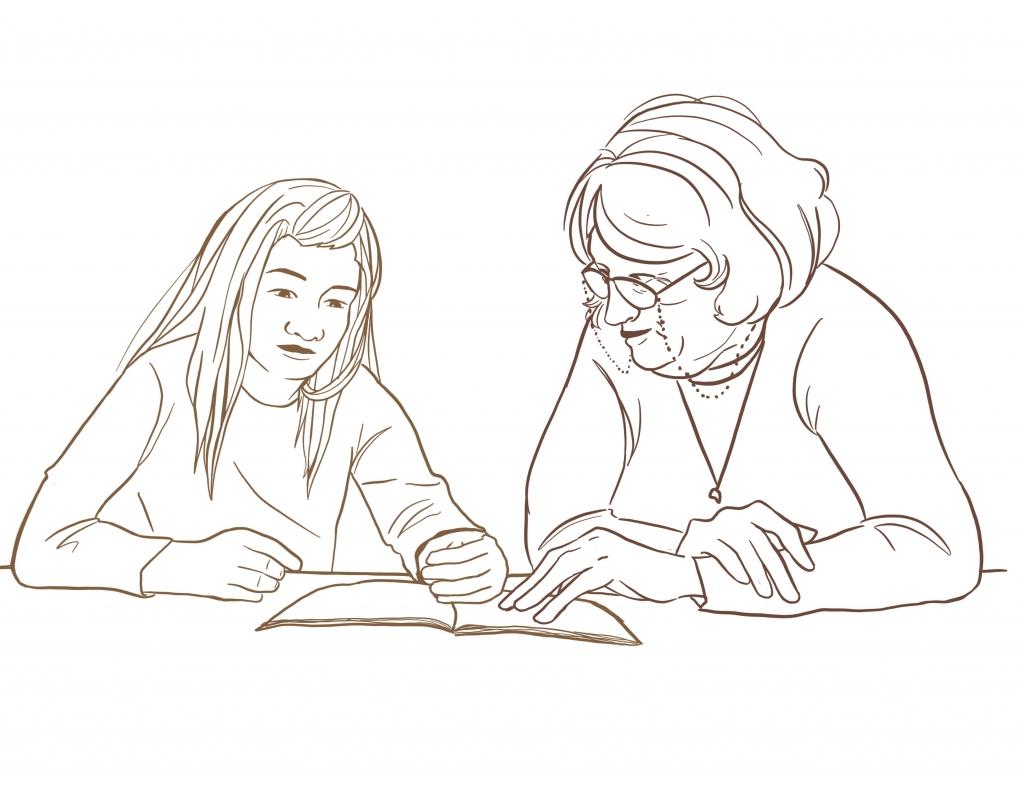Dr. Seuss once said, “You’re never too old, too wacky, too wild, to pick up a book and read to a child.” Seuss’s words have truth beyond their sensationalism: not reading to a child can adversely affect their development. According to a 2019 study by the Ohio State University, there is a gap of almost 300,000 words between 5-year-olds who did not have parents read to them and those whose parents read to them once a day.
This is where the Avenidas Early Literacy Program steps in, as a program that enables seniors to read to young children. The program operates through Avenidas, a nonprofit organization established as a senior center in Palo Alto, and provides various services and programs for seniors as a way to engage retired community members.
The program began as a pilot in 1996 at El Carmelo Elementary School with a small group of teachers, volunteer tutors and students. The program caught on, and now, the group is partnered with 22 schools within seven Bay Area school districts, including Palo Alto Unified School District.
Run by Michael Kass, a former teacher and principal in PAUSD, ELP connects trained senior citizen volunteers with struggling elementary schoolers; each pair is scheduled for two half-hour sessions every week to strengthen the student’s reading skills.
“We focus on helping children improve their reading fluency and comprehension,” Kass says. “We don’t do writing, we don’t do other subjects and [are] really very focused on literacy.”
According to Kass, after third grade, the focus at school shifts from learning to read, to reading to learn, and students need a strong foundation in literacy space to be able to keep up.
“If a child is not reading at grade level, at the end of first grade … that’s seven years old,” Kass says. “They have a one in eight chance of catching up.”
Audio PlayerAccording to ELP, the number of students reading at grade level went from 18% in the beginning of the 2018-19 academic year, to 40% at the end of the year, and 33.6% of the kids below grade level improved to approaching standards.
“The light bulb moment is my favorite moment … It’s really noticeable when they go ‘I’ve got it.’ ‘I’ve got it.’”
— Nancy Jensen, volunteer
The program’s strength is not just in helping students. ELP provides a way for retirees looking to help educate the next generation.
In 2008, Nancy Jensen had recently retired, and was looking for something fulfilling to do with her free time, when she was introduced to ELP by Kass. The program struck an immediate chord with her.
“My husband and I used to read out loud to each other … and we missed it because it’s a wonderful thing to read out loud, and we would like to pass that on to children,” Jensen says.
Jensen is currently in her 12th year volunteering with the program, and thoroughly enjoys her work.
“I think that one of the things about growing old is that you enjoy having an effect on people who are still growing,” Jensen says. “It’s just a joy to go and see these children … and help them become more interested in reading, and watching them move up to books with more writing.”
Jensen plans to continue to volunteer at ELP for as long as she can. Being a tutor has helped connect her to younger generations, and to do her part to make sure that everyone can be successful. Above all, she enjoys the little moments the program provides.
“The light bulb moment is my favorite moment,” Jensen says. “When students go from struggling a little bit to … feeling more comfortable and trying out the word that’s a little hard for them. It’s a slow transition, but it’s really noticeable when they go ‘I’ve got it. I’ve got it.’”
RELATED STORIES
From students to teachers: Class teaches childhood development



